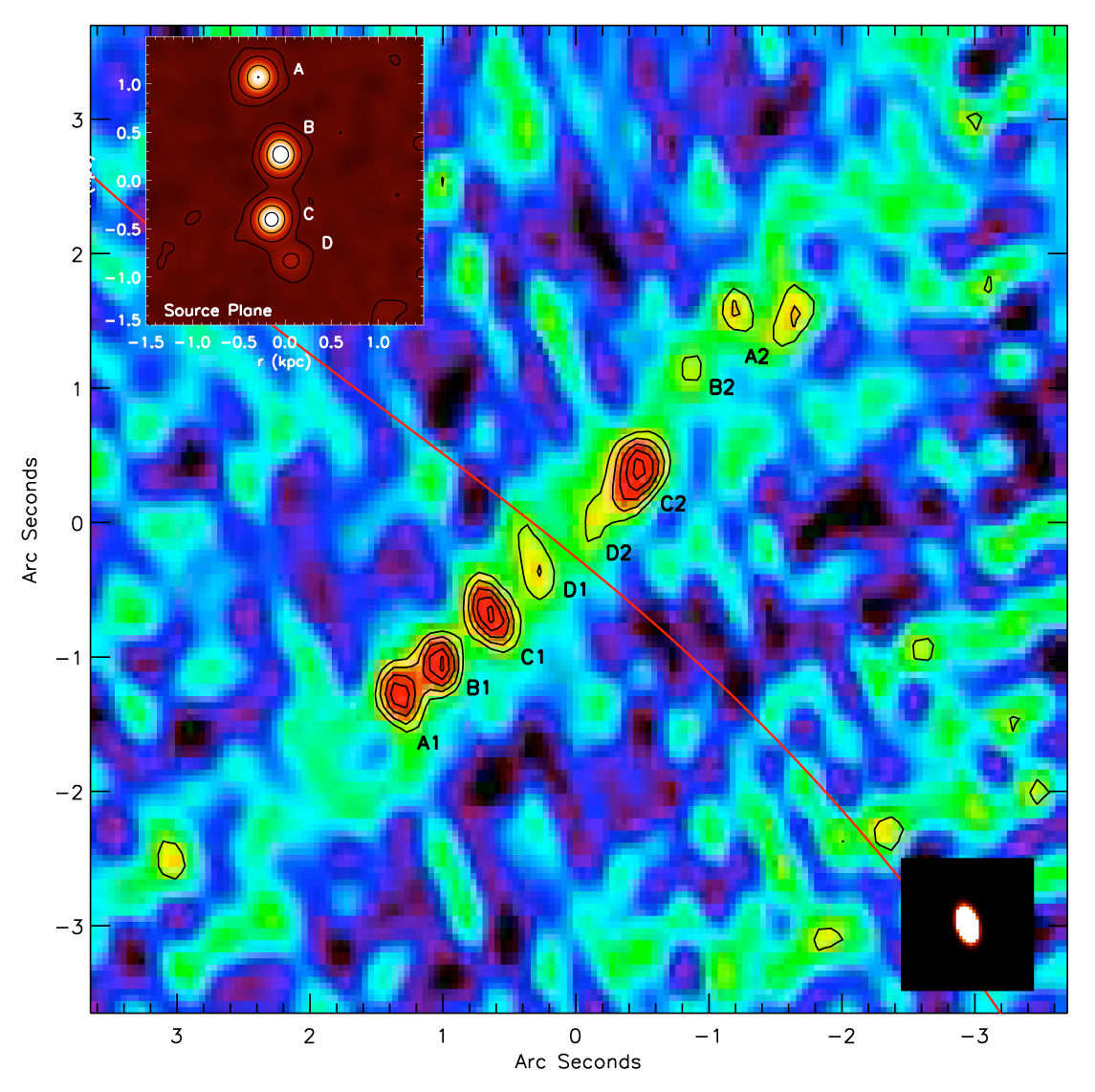Image List
-

Arp 220 is a nearby example of a merged starburst galaxy similar to SMM J2135-0102. Located 250 million light-years from Earth, Arp 220 is the aftermath of a collision between two spiral galaxies. The collision, which began about 700 million years ago, has sparked a crackling burst of star formation, resulting in about 200 huge star clusters in a packed, dusty region about 5,000 light-years across (about 5 percent of the Milky Way's diameter). The star clusters are the bluish-white bright knots visible in the Hubble image.
NASA, ESA, the Hubble Heritage-ESA/Hubble Collaboration, and A. Evans (UVa/NRAO/Stony Brook) -

The distant galaxy SMM J2135-0102, shown here in 870-micron observations by the Submillimeter Array, has been gravitationally lensed by a foreground galaxy cluster. The galaxy's light is magnified and bent by gravity to produce mirror images of each of four star-forming regions (labeled A through D). If the galaxy were seen undistorted, it would appear like the inset at upper left. Regions A and D are separated by less than 6,000 light-years. The inset at lower right shows the resolution of the SMA image.
Mark Swinbank (Durham) and Steve Longmore (SAO)